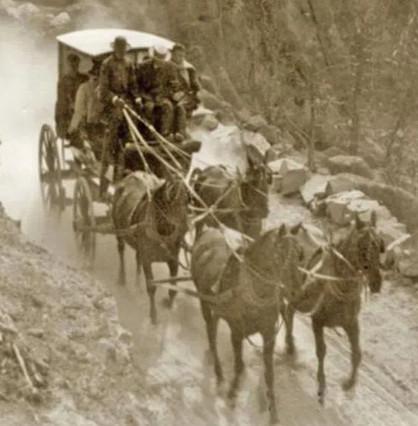Joe’s Dugout (aka Dugout, Joe Butcher’s, Seven Mile). The site is on the pass between Utah Valley and Cedar Valley. Nothing remains. There is a monument (N40 21 23.0 W111 59 18.0) at the bottom of the pass on the east side.
In conjunction with the Express and stage operation, Joseph Dorton operated a small grocery store. Clients were generally the soldiers from Camp Floyd. He also built a two-room brick home and log barn and provided a dugout for an Indian boy helper. Besides well water, water was hauled from Utah Lake and sold for 25 cents/bucket. Use of the station after 1861 is unknown. It may have continued in use as a stage station. (Expedition Utah)
The 1861 mail contract referred to Dugout as a station, but sources also list it as Joe's Dug Out, Joe Dugout, Joe's Dugout, Joes Dugout, and Joe Butchers. Joseph Dorton managed operations there and ran a grocery at the adobe station, which also served as a stop for the stage lines. Station structures also included Dorton's two-room brick home, log barn, and a dugout for Dorton's young Indian helper. Dorton dug a deep well near the site, hoping to find a reliable source of water. According to Kate Carter, the well failed and led to the eventual abandonment of Dugout as a station site. (NPS)
We were convoying ten horses, which, not being wild, declined to herd together, and by their straggling made the task not a little difficult to a tyro. The road was that leading to Camp Floyd before described. At the Brewery near Mountain Point we found some attempts at a station, and were charged $1.50 for frijoles, potatoes, and bread: among other decorations on the wall was a sheet of prize fighters, in which appeared the portraiture of an old man, once the champion of the light weights in the English ring, now a Saint in Great Salt Lake City. The day was fine and wondrous clear, affording us a splendid back view of the Happy Valley before it was finally shut out from sight, and the Utah Lake looked a very gem of beauty, a diamond in its setting of steely blue mountains.
(The City of the Saints, p 444)
